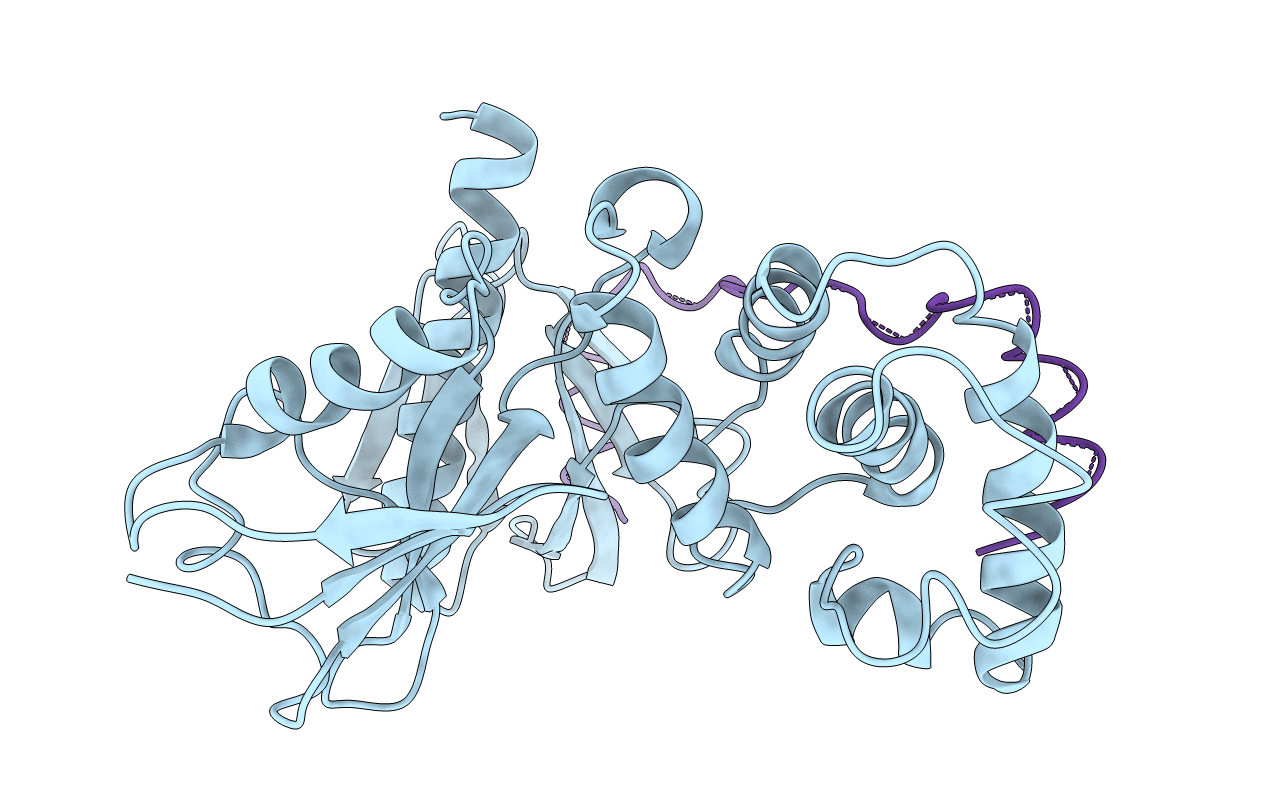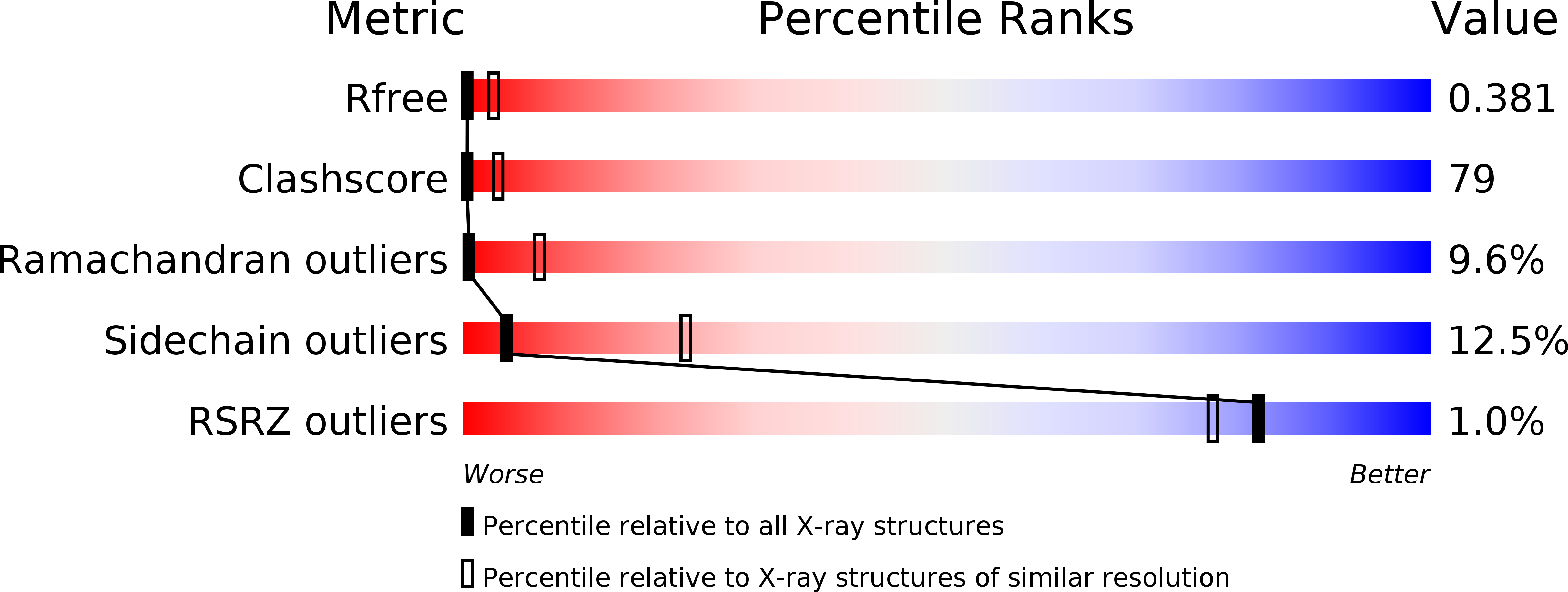
Deposition Date
2004-02-23
Release Date
2004-06-29
Last Version Date
2023-08-23
Entry Detail
PDB ID:
1SGH
Keywords:
Title:
Moesin FERM domain bound to EBP50 C-terminal peptide
Biological Source:
Source Organism:
Homo sapiens (Taxon ID: 9606)
Host Organism:
Method Details:
Experimental Method:
Resolution:
3.50 Å
R-Value Free:
0.40
R-Value Work:
0.33
Space Group:
C 1 2 1


